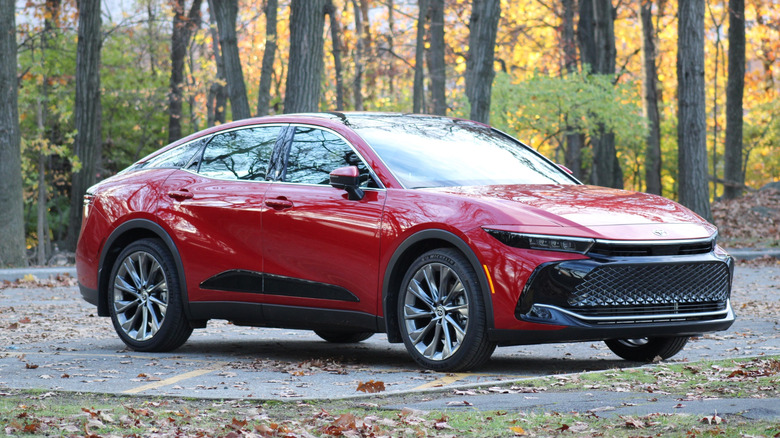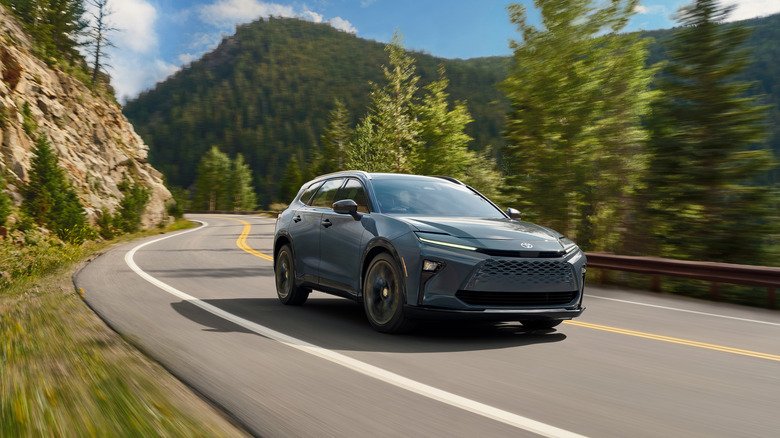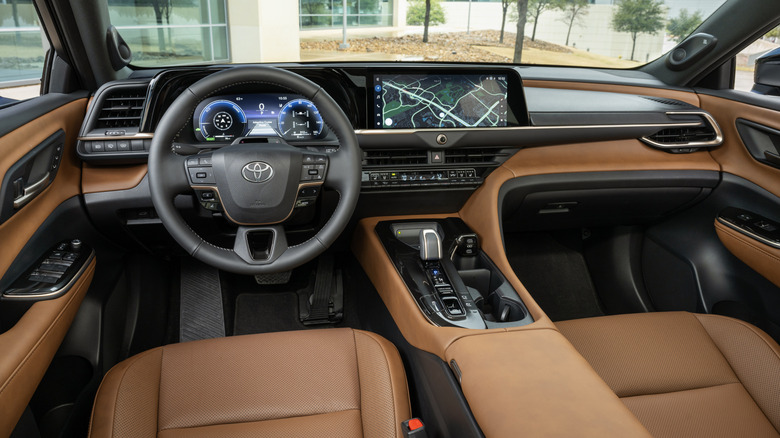What's The Difference Between The Toyota Crown And The Crown Signia?
The Crown nameplate made a return to Toyota's American lineup in 2023 with the aim of bringing a touch of elegance and style to its existing fleet. Toyota decided to build on this with the introduction of the Crown Signia into U.S. markets in the summer of 2024, adding a slightly different dimension to the lineup. Both vehicles may share the same name and be part of Toyota's hybrid lineup, but they cater to different needs and preferences.
The Toyota Crown is a hybrid between a sedan and a crossover, or a lifted sedan if you like. Its intention is to blend traditional four-door comfort and luxury, but with a sporty edge. On the other hand, the Crown Signia is a two-row midsize SUV introduced to replace the Toyota Venza.
Although the Crown Signia is loosely based on the Crown sedan, the two models have their own unique interiors, design and features that separate them. Both models utilize the same hybrid powertrains but employ them in slightly different ways. Whether you're looking for something sleek, sport styling and a lower profile or you need extra cargo space and family practicality, understanding what separates the Crown models is key. Let's do a deeper dive into what distinguishes these two vehicles.
Design, performance, and efficiency
The most distinguishable difference between the two vehicles is their body design. The Toyota Crown is a sleek-profiled sedan, while the Crown Signia adopts a more traditional SUV design, offering greater cargo space and a higher seating position. When it comes to dimensions, the Crown Signia is notably taller and boxier and offers a decent 68.8 cubic feet of cargo space when the rear seats are folded, giving it the expected edge in utility. Both vehicles sit on Toyota's TNGA-K platform, meaning they offer similar levels of refinement, but the Crown Sedan is lighter and sits lower to the ground, giving it the edge in diving dynamics.
In terms of performance, the Toyota Crown offers two hybrid powertrains. The base model comes equipped with a 2.5-liter four-cylinder hybrid that puts out 236 horsepower. At the top of the lineup, the Platinum trim utilizes Toyota's Hybrid MAX system, which combines a 2.4-liter four-cylinder with electric motors to produce a potent 340 horsepower with all-wheel-drive as standard.
The Crown Signia utilizes the same 2.5-liter hybrid as the base Crown Sedan, while it's not Toyota's most powerful SUV, being tuned for smoothness and efficiency over performance, it has a respectable combined output of 240 horsepower. All-wheel-drive comes as standard on the Signia, and the SUV offers a decent EPA-estimated 38 mpg combined, while the Crown sedan offers 41 and 30 mpg combined for the Limited and Platinum trims, respectively.
Interior features, tech, and who each Crown is built for
The Crown and Crown Signia both aim to bring a more refined driving experience when compared to other Toyotas in their respective classes, but they go about doing so in different ways. The two cars offer an almost identical cabin and dashboard setup, with a few differences here and there. The Crown sedan adopts a minimalist and futuristic vibe, with bronze accents and a low seating position, playing into the Crown's sporty nature. It comes standard with a 12.3-inch infotainment screen, a digital gauge cluster, and Toyota's latest infotainment software.
The Crown Signia, meanwhile, offers a warmer, more traditional luxury feel with available wood grain-style trim, optional quilted leather seats, and a more spacious cabin. The Signia is designed for families who want a luxury vehicle without needing to step up to a Lexus — offering premium features like a panoramic sunroof and 60/40 split rear seatbacks for flexible cargo management. However, the Signia does share the exact same infotainment and driver's display setup as the Crown sedan.
Ultimately, the Crown is better suited to buyers who want a premium sedan that's stylish, modern and is sporty to drive. The Crown Signia is more orientated towards buyers who want more space for their family or hauling extra cargo, while still benefiting from Toyota's smooth hybrid engine and premium features. Both vehicles are excellent options, it just comes down to what works best for you.


